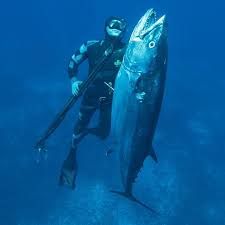Big-Game Fishing

Big-Game Fishing - Detail NOT Finished
Made possible by the motorized boat, saltwater big-game fishing was pioneered in 1898 by Charles Frederick Holder, who took a 183-pound (83-kg) bluefin tuna off Santa Catalina Island, California. Fish usually caught by big-game anglers include tuna, marlin, swordfish and shark. Big-game fishing spread to the Atlantic, and catches of increasing size were made on relatively light tackle and line, especially after the invention of a reel with an internal drag by Julius von Hofe of Brooklyn, New York, in 1913. Big-game anglers fish from “fighting seats” into which they can be strapped. Rods are massive, and the butts fit into a socket mounted on the chair. Reels are large, and the line is usually of Dacron or nylon with a wire leader near the hook to prevent the large teeth of the fish from shearing the line.
The establishment of the International Game Fish Association (IGFA) in 1939 did much to promote big-game fishing and to regulate it—supervising marine fishing competitions, establishing various weight categories for lines, and keeping championship records. The IGFA also promoted scientific study by encouraging the tagging of released fish to establish fish habitat patterns and by working for conservation of endangered species. In 1978 the association also took over the keeping of freshwater fishing records.
Competitive casting is an adjunct sport, much as shooting is for hunting, under the supervision of the International Casting Sport Federation (founded 1955), with member groups in about 30 countries in the late 20th century. It sponsors tournaments and recognizes world records for accuracy and distance. Competitions are held with both bait-casting and fly tackle.